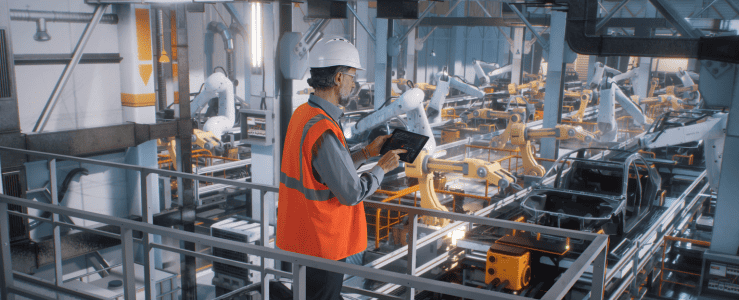Blog

What SAP Manufacturers Need to Know When Considering Headless Commerce
Simply put, headless commerce is the separation of front-end and back-end commerce functionality. And how is this relevant to an SAP ERP customer? Front-end commerce applications constantly evolve to improve the user experience and implement the latest user interfaces and functionality. The back-end commerce functionality–like integration to SAP–is independently handled and configured. It’s a best-of-both-worlds approach that frees enterprises to select, or move to a best-in-breed eCommerce solution without the IT impact of re-coding the business-critical SAP integration. This is even more important when leveraging SAP Variant Configuration as this logic lies within SAP and trying to replicate or map this complexity to a front-end commerce solution is untenable.
The Strategy Behind Headless Commerce
IT resources are stretched further than ever before. That’s compounded with a skill shortage–especially for expertise in esoteric systems like SAP. Your organization needs a commerce strategy that enables a back end integration to SAP to be “set it and forget it” easy. Leveraging prebuilt but customizable packaged integration processes (PIPs) is one way to ensure back-end connectivity to your SAP ERP, whether ECC or S/4HANA, is rock solid.
Your front-end commerce solution may change over time. In fact, a recent eCommerce platform report reveals that more than 1 in 4 companies with eCommerce capabilities is looking to switch platforms, despite the cost. Rapidly changing buyer expectations (in B2B and distribution–not just B2C) mean front-end commerce portals are constantly evolving and changing to be more responsive, easier to use, and offer additional functionality.
So while front-end applications may change and evolve, you can future-proof a huge and critical part of your eCommerce solution by separating the front- and back-end functionality. Having a robust, SAP-connected back end solution enables “bring your own front end” type of responsiveness.
This is also an excellent strategy to increase your time-to-market–minimizing costly back-end development while being nimble and responsive to commerce functionality.
You’re Not Alone: Stretched IT Resources and More Integrations
New data from the annual Connectivity Benchmark Report reveals that according to CIOs and IT decision makers, less than 30% of their business applications are integrated. Further, organizations report spending an average of $4.7 million USD on implementing custom integrations in the past 12 months–a 21% increase over 2021.
This highlights the overall business demands on IT departments and how revenue-impacting capabilities–like eCommerce–can quickly become lost in a sea of technology debt, ERP modernization initiatives, and CRM upgrades.
Choosing a headless commerce architecture, combined with a pre-packaged SAP integration framework, means your backend processes can continue to run smoothly when front-end changes are made.
Benefits of Headless Commerce for SAP Customers Include:
- Maximum scalability and performance.
Scale, upgrade and evolve front-end capabilities (think omnichannel commerce) without impacting back-end performance. - Optimize flexibility and innovation.
Your organization won’t be tied to a single vendor for commerce capabilities–meaning you can integrate components when, and as, you need them. - Flexible customer interface.
Upgrade your branded customer-facing portal to drive loyalty without impacting the order logic process. - Maintain a single source of truth: SAP.
Using SAP-based data for pricing, quoting, discounts, availability, and even configuration, you ensure 100% SAP-acceptable orders, regardless of which commerce interface you chose.
- Improved time-to-value.
Back-end business logic, functionality and capabilities comprises up to 85% of the software development process. Investing in this mission-critical process once means future evolutions to the customer- and distributor-facing commerce capabilities are quicker, simpler, and more flexible. - Seamlessly handle Variant Configuration.
Variant Configuration layers additional complexity into eCommerce and is best handled with a robust back-end solution that uses data virtualization to handle the complexity rather than relying on replication and dual-maintenance.
Headless commerce enables rapid changes and faster innovation with impacting the underlying eCommerce logic. This reduces the demand on talent-strapped IT departments, drives incremental eCommerce-based revenue, and maintains SAP-based rules, business logic, discount and more as the single source of truth.
To learn more, see how enosix enables real-time SAP data to address quoting complexity, or eCommerce (including headless commerce).


